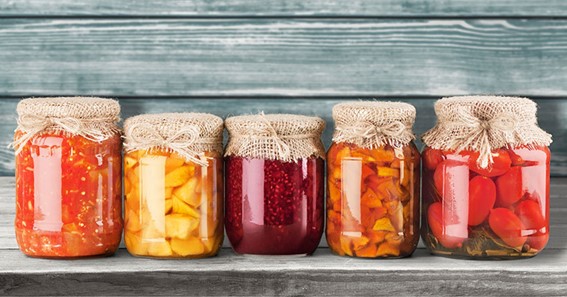Food preservation is the process of extending the shelf life of food by preventing and slowing down spoilage due to microorganisms, oxidation, or other environmental factors. This can be accomplished through various methods and techniques, from traditional methods to modern technologies.
A lot of benefits come with preserving food, including reducing waste and extending the shelf-life of a product. Most importantly, food preservation can help prevent food-borne illnesses and support a healthy diet. Today, Vacuum Pumps and Sealers, Freeze Drying, and dehydration are some of the most popular methods used for food preservation.
Traditional Food Preservation Techniques
1. Canning
This technique is one of the most common methods used to preserve food for extended periods of time. The canning process involves placing food in an airtight container and boiling it at temperatures high enough to kill microbial contaminants.
2. Fermenting
Fermenting food is a traditional method of preserving it and, at the same time, increasing its nutritional value. This technique involves breaking down sugar molecules in the food into lactic acid, which acts as a preservative and prevents bacteria growth.
Click here – Which Scooter Is The Best For 14-Year-Old Kids
3. Pickling
Pickling is another ancient technique used to preserve food. This process involves soaking the food in a brine solution that kills bacteria and helps prevent spoilage. When you have pickled vegetables like cucumbers, onions, and carrots, they can last for months in the refrigerator.
4. Smoking
Smoking is an effective way of preserving food by exposing it to smoke from burning wood, which gives foods a distinct flavor and helps prevent microbial growth. In ancient times, hunters used smoking to preserve game meat, but today it is commonly used in food processing.
5. Salting
Salting is a traditional method of preserving food by adding salt to the food, which helps prevent spoilage from bacteria and mold. This is the simplest and most widely used method of food preservation.
Modern Techniques in Food Preservation
6. Vacuum Pumps and Sealers
These devices help remove oxygen from a container or package to create an airtight seal that prevents microbial contamination. This method is used for preserving both wet and dry foods.
7. Freeze Drying
This technique involves freezing food and then rapidly drying it in a vacuum chamber to remove moisture, which helps preserve the food for longer periods.
8. Food Irradiation
This process involves exposing food to gamma rays or electron beams to kill bacteria and microorganisms that cause spoilage. Food Irradiation is very useful for preserving fresh fruits and vegetables, as well as packaged meats and seafood.
Click here – Why Are Dental Implants So Important?
9. Dehydration
This technique is used to reduce the water content in foods by drying or heating them, which helps to preserve their nutritional value and extend their shelf-life. Most of the time, dehydration is used to preserve fruits and vegetables.
In Conclusion
By properly preserving food, you can ensure that it stays fresher for longer periods of time. Furthermore, proper preservation helps to reduce food waste and prevent the spread of food-borne illnesses. By combining traditional techniques and modern technologies, we can keep our foods safe and nutritious for extended periods.
These are some of the most popular methods used for food preservation. Depending on the type and nature of the food, consider other alternatives as well if they are more suitable and appropriate. To ensure maximum safety and quality, you must always follow proper preserving techniques when dealing with food in order to reduce spoilage and wastage.

